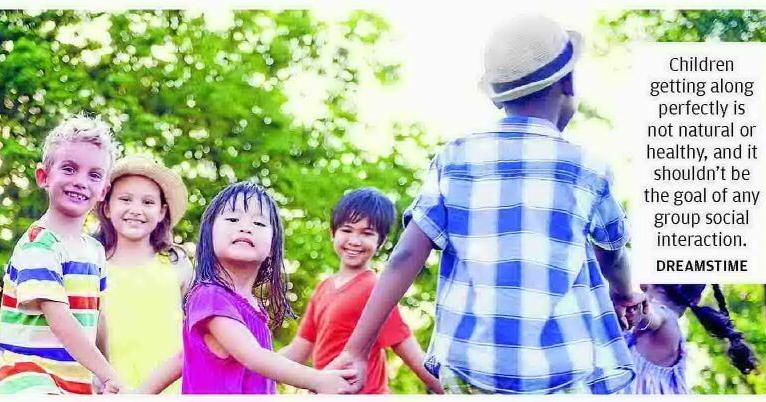Q: I live in a close-knit community where I regularly babysit for several kids. They love coming to my house, and I love having them here. The issue at hand is that one of the kids, a 9-year-old girl, is struggling to socialize with the others. Despite my efforts to help her adjust with the group, there are limits to what I can do. She tends to gravitate towards younger friends. The older kids often exclude her, and when she tries to retaliate, they push her further away. She lacks the skills to express her displeasure. I deeply care for these kids and want to see a positive resolution. Any advice?
A: This situation is quite common. So, how do we address it?
Having worked successfully with groups of kids for the past twenty-five years, I can affirm that expecting all children to get along perfectly is neither natural nor healthy. It should not be the primary goal of any group social interaction.
People are also reading…
Children are going through the natural and sometimes painful process of transitioning from parents as the primary teachers of social behaviors to peers taking on that role. It’s normal for children to seek out a more suitable peer group if they receive negative feedback from their current one. In this case, the 9-year-old seeking younger friends is a healthy response. It means she’s not yet ready to interact with kids her age, and that’s okay. Her development is simply different from the other 9-year-olds at this time.
While we shouldn’t interfere with this natural progression, as an adult in these situations, you should play the role of a friendly, loving figure who ensures that children can give each other feedback, even if it expresses frustration, as long as it aligns with your values. Here’s how I would handle the situation with the specific child, Kid No. 1:
Kid No. 1: Give me that toy! Give it now! I am an only child, so I think all things are mine all the time! Therefore, I’m wondering why you have something I want! Gimme!
Kid No. 2 (holding it away from Kid No. 1): No! I said no! You are always doing stuff like this! Get away! This is why we don’t like playing with you!
Kid No. 1 (getting angry and on the verge of violence): Nooo! I want …
Kid Whisperer: Oh, dear. You will now come with me to another room until you can calm down and be pleasant. You’re welcome to stay as long as you follow these rules. Once you’re calm and pleasant, you can join Kid No. 3 and Kid No. 4 in the other room. Interaction with the older kids is done for today.
The other room can be a designated space where Kid No. 1 can regulate herself away from the other children. Upon return, Kid Whisperer will be nearby to guide behavior and ensure everyone’s safety.
This approach allows children to learn from one another while maintaining a safe and positive environment that they cherish.
Scott Ervin, a behavioral consultant, is a parent and former teacher and principal. For more information, visit www.behavioralleadership.com.





